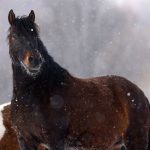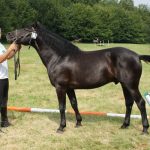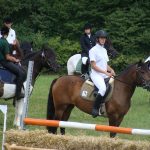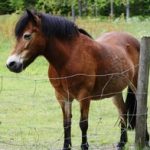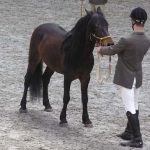Hucul Pony
The Hucul Pony, also called the Carpathian Pony, is a breed of small, heavily built horses native to the Carpathian Mountains. This ancient equine breed is named after the Hutsul people, the inhabitants of Carpathian Mountains in Romania and Ukraine. Although the historical breeding region of Hucul ponies is contained within Poland, Romania, and the Slovak Republic, it has now spread to Hungary, Ukraine, and the Czech Republic.
Hucul Pony Pictures
- Carpathian Pony
- Hucul Horse
- Hucul Ponies
- Konie Huculskie
- Hucul Pony Pictures
- Hucul Pony
Quick Information
| Alternative Names | Huculska, Huţul, Huzul, Huţan, Hutsul |
| Temperament/Personality | Calm, sensible, hardy, willing to work, intelligent, good natured |
| Physical Characteristics | Sturdy conformation with short head; large, expressive eyes, somewhat short neck, broad chest, short legs, sound feet; thick and coarse coat |
| Colors | Black, bay, chestnut, dun; zebra and dorsal stripes on its legs |
| Height (size) | Stallions: 13.6-14.1 hands (138-143 cm, 54.4-56.4 inches) Mares: 13.4-13.9 hands (136-141 cm, 53.6-55.6 inches) |
| Weight | Stallions: 924-1012 lb (419-459 kg) Mares: 880-979 lb (399-444 kg) |
| Common Uses | As draft horses for pulling timber in forests, pack animals, and riding horses on rough terrain or inaccessible mountainous routes |
| Health | No breed-specific health issues have been reported up until now |
| Feeding/Diet | Forage such as hay or pasture; sugar beet pulp can provide additional calories required to fuel exercise or maintain weight |
| Distinguishing Traits | Equable temperament, easy to feed, stamina, correct conformation |
| Country of Origin | Carpathian Mountains covered by Romania, Poland, Ukraine, and Slovakia |
| Ancestors | Carpathian-type Tarpans, Arabian, Kertag horses |
Video: Hucul Ponies Grazing
History and Development
The Hucul ponies are thought to have been influenced by the wild Tarpan blood since both the equine breeds share some common traits. Written resources from the 15th century also refer to a “Mountain Tarpan” type with all the characteristics of a feral horse. Since they were originally bred in the harsh conditions of Carpathian Mountains, they traditionally have high-level of endurance and can live on proportionally less amount of food.
In the mid-19th century, the first stud was formed at Rădăuţi in Romania. Since its inception, the herd books of Hucul ponies have been kept, with some of the oldest lines that trace back to that time. During the Austro-Hungarian rule, these ponies were used as cavalry mounts.
Careful breeding of foundation stallions including Prislop, Pietrousu, Goral, Ouşor, and Hroby preserved their purity. Consequently, 33 Hucul ponies were brought to Czechoslovakia to create the Gurgul bloodline. The development of the breed was stopped during the First and Second World Wars, as the Hucul Horse population severely declined in Czechoslovakia with only 300 horses remaining after the war.
Eventually, in the early 1970s, the breeders founded the Hucul Club with the objective of saving the breed from extinction. Moreover, a breed registry with 50 purebred animals was established in 1982. Only 500 broodmares survive today, and therefore serious action for their preservation is needed.
Interesting Facts
- Hucul ponies are sometimes used for hippotherapy, which is a rehabilitative treatment for the improvement of balance, strength, and coordination.


